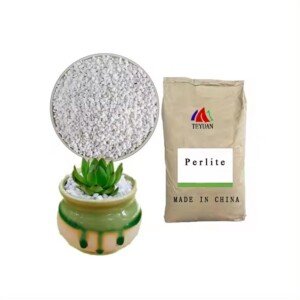Succulent plants have captured the hearts of gardeners with their unique shapes and low-maintenance nature. One key ingredient that can significantly boost their growth and health is perlite.
The Magic of Perlite’s Properties
Perlite, with its density around 1.2%, is a lightweight volcanic rock derivative. Its porous structure is created when volcanic glass is heated until it expands. These pores are like tiny air pockets. In a succulent’s potting mix, they prevent soil compaction. Succulents’ roots, which are often fine and delicate, can easily penetrate the airy perlite, reaching for nutrients and water.

Exceptional Drainage for Succulents
Succulents hail from arid regions and are adapted to survive in well-draining soils. Perlite excels in this aspect. It allows excess water to drain away quickly, mimicking their natural habitat. After watering, water doesn’t pool around the roots. This is crucial as succulents are prone to root rot if left in soggy soil. The fast drainage provided by perlite keeps the roots dry enough to avoid decay.
Aiding Root Respiration
Just as we need air to breathe, succulent roots need oxygen. The airy nature of perlite means oxygen can circulate freely in the soil. The open pores create channels for air exchange. This promotes healthy root respiration, enabling the roots to function optimally. Strong, healthy roots are the foundation for robust succulent growth above the ground.
Temperature Regulation
In both hot summers and cold winters, perlite offers some insulation. In summer, it helps prevent the soil from overheating, protecting the roots from heat stress. In winter, it provides a bit of a buffer against freezing temperatures. This temperature moderation gives succulents a more stable environment to grow in, reducing the shock of extreme weather.
Mixing Ratios and Best Practices
A common and effective mix for succulents is about 50% potting soil and 50% perlite. This balance provides enough nutrients from the soil while ensuring excellent drainage. When repotting succulents, gently loosen the root ball and mix in perlite. Ensure even distribution. This new mix will invigorate the plant, giving it room to expand its root system.
Long-Term Benefits in Potting
Over time, perlite doesn’t break down like some organic materials. It maintains its structure, continuing to offer drainage and aeration benefits. This means fewer repottings due to soil degradation. Succulents can thrive in the same pot for longer periods, saving gardeners time and effort while allowing the plants to establish deep, healthy root systems.
Sourcing Quality Perlite
When purchasing perlite, look for products that are clean and free of debris. Some low-quality perlite might have small stones or impurities. Opt for brands with a good reputation. Check if it’s been properly processed to maintain its ideal density and porosity. A reliable source ensures you get the full benefits for your succulents.
Companion Planting with Perlite
Perlite can also be beneficial when creating succulent arrangements. In a terrarium or a mixed succulent bowl, it helps keep individual plants’ root zones healthy. You can layer it at the bottom for drainage or mix it throughout. This way, each succulent gets the right conditions, even in a confined, decorative space.
Monitoring and Adjusting
Keep an eye on your succulents after adding perlite. If you notice the soil drying out too quickly in hot weather, you might need to adjust your watering schedule. If plants seem stunted, check if the perlite is evenly distributed. Regular monitoring allows you to fine-tune the growing environment and make the most of perlite’s advantages.

